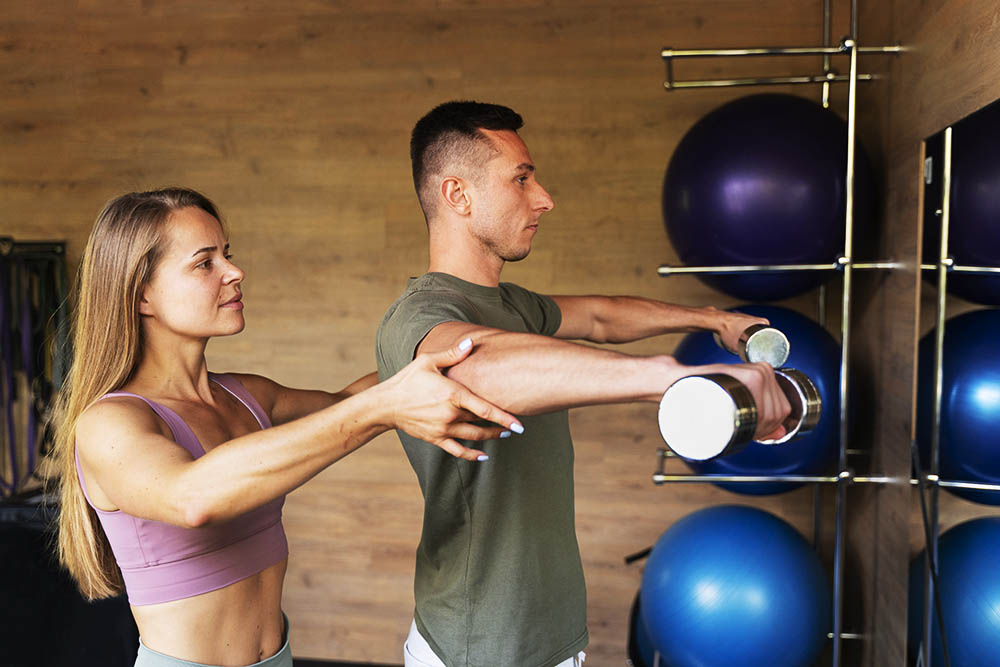Sports: A Universal Language
There are few things in life that can bring people together like sports. From small communities to global events, athletics have the ability to transcend language barriers, cultural differences, and even political ideologies. In this sense, sports are truly universal.
However, as much as sports can bring people together, there are still barriers that exist that can prevent some individuals from being able to fully participate in the same ways as others. For people with disabilities, these barriers can be particularly difficult as they may face physical or logistical obstacles that others simply do not. Here, we will examine why sports should be accessible to everyone, and discuss some strategies for breaking down these barriers.
Accessibility and Inclusion
First, it is important to understand why accessibility and inclusion are so important. When we are talking about sports, it is not just about individuals being able to compete at the highest levels possible, but also participating at all. Sports offer a number of benefits, both physical and mental. For children, sports can be an important way to build social skills, self-confidence, and a sense of teamwork. For adults, sports can be a source of stress relief, physical exercise, and community building.
By making sports more accessible for people with disabilities, we can help to ensure that everyone has the opportunity to reap these benefits. In addition, by including people with disabilities in sports, we can help to break down stereotypes and promote greater acceptance and understanding. By creating a more inclusive sports culture, we can work towards a more inclusive society overall.
Barriers to Access
Unfortunately, there are a number of barriers that exist which prevent many people with disabilities from fully participating in sports. Some of the most common barriers include:
Physical Barriers
Many sports facilities and venues are not designed with accessibility in mind. This can make it difficult or impossible for people with disabilities to navigate the space or participate in certain activities. For example, a wheelchair user may not be able to access a swimming pool because there is no ramp or lift available.
Equipment Limitations
Sports equipment is often not designed with accessibility in mind. For example, a wheelchair user may not be able to use a standard basketball hoop because it is too high. This can be particularly challenging for people who want to participate in niche sports, such as rock climbing or skiing, where specialized equipment may be required.
Logistical Challenges
In addition to physical and equipment-based barriers, there may also be logistical challenges that prevent people with disabilities from participating in sports. For example, transportation can be a major issue, particularly if the sports facility is not located on a public transportation route. In addition, many sports teams and clubs may not have the resources or knowledge necessary to accommodate people with disabilities.
Breaking Down Barriers
Fortunately, there are a number of strategies that can be used to break down barriers and make sports more accessible for people with disabilities. Some potential solutions include:
Facility Modifications
One of the most important and impactful ways to make sports more accessible is by investing in facility modifications. This can include the installation of ramps, elevators, and other accessibility features that allow people with disabilities to navigate the space. In addition, facilities can invest in specialized sports equipment that is designed with accessibility in mind. By making these changes, facilities can ensure that people with disabilities are not excluded from participating in sports.
Training and Education
In addition to making physical modifications, it is also important to educate staff and volunteers on how to work with people with disabilities. This can include training on how to use specialized equipment or how to modify activities to make them more inclusive. By ensuring that staff are knowledgeable about working with people with disabilities, sports teams and clubs can create a more welcoming and inclusive environment.
Programs and Opportunities
Another important strategy for making sports more accessible is to create specialized programs and opportunities for people with disabilities. This can include creating teams or leagues specifically for people with disabilities, or offering modified versions of popular sports that are more accessible. In addition, sports organizations can partner with disability advocacy groups to create events and opportunities that are designed for people with disabilities. By creating these specialized programs, sports organizations can help to ensure that everyone has the opportunity to participate in sports.
Final Thoughts
Sports have the ability to bring people together and create connections that transcend language, culture, and political beliefs. However, to truly make sports accessible and inclusive, we need to work to break down the barriers that prevent people with disabilities from fully participating. By investing in facility modifications, training staff, and creating specialized programs, we can ensure that everyone has the opportunity to experience the physical, mental, and social benefits of sports. Ultimately, by creating a more inclusive sports culture, we can work towards a more inclusive society overall.
